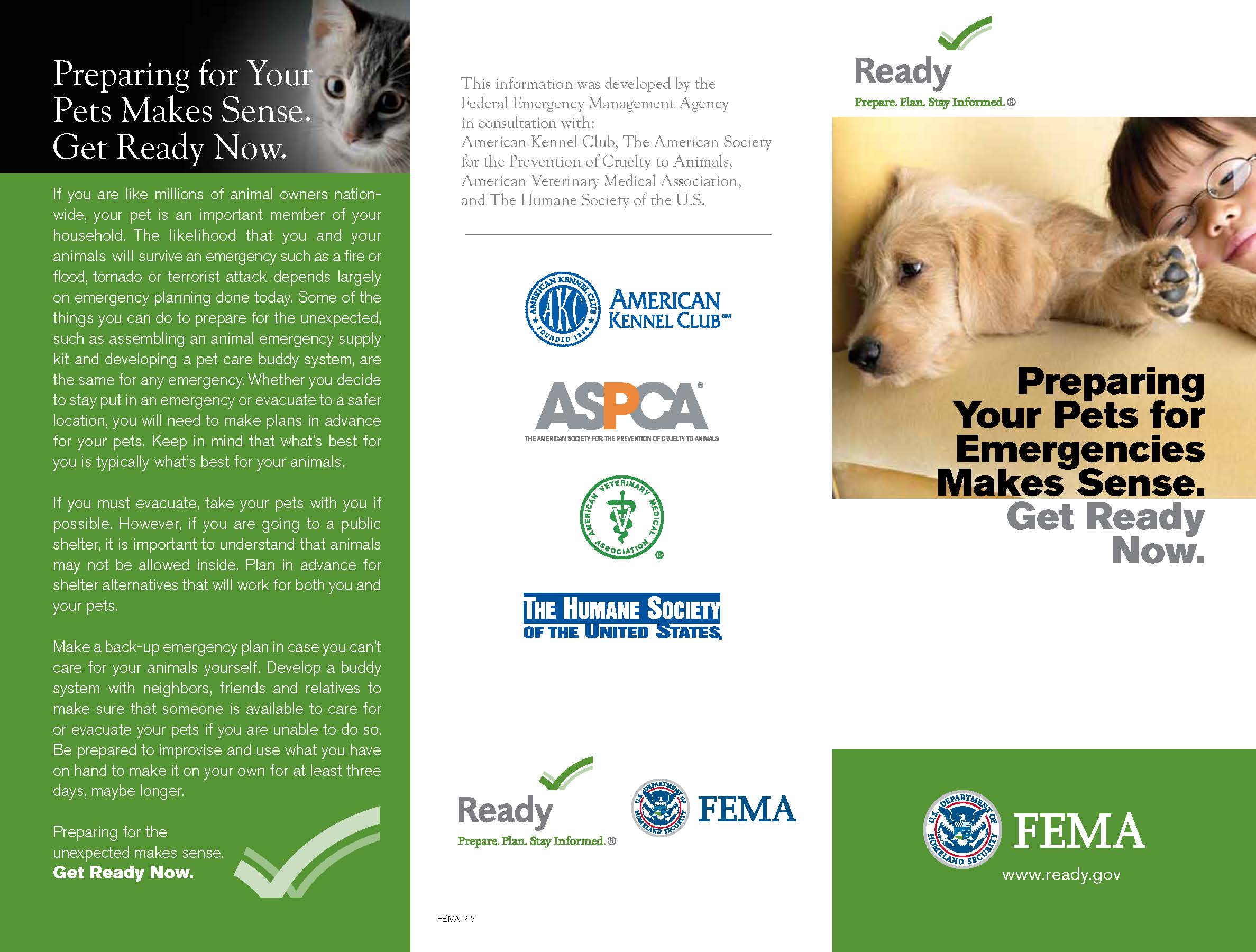Brochures
Companies, organizations, and community groups commonly produce brochures to provide essential information about products, goals, events, or issues. Brochures are designed as compact, easy-to-carry documents; their distinguishing features are the use of folded sheets of paper to create pages and the brevity of their content. Brochure writers present information in a condensed, readable form and aim to encourage readers to learn more about a subject—by directing them to a Web site, perhaps, or by inviting readers to call or write for more information.
A typical brochure emphasizes key points and frames information to help readers understand the subject in a particular way. Good design is critical to a brochure’s success: headings, illustrations, color, fonts, pull quotes, and other design elements draw attention to particular areas of the brochure, highlighting important information and downplaying less significant details.
 | FEMA |
Preparing Your Pets for Emergencies Makes Sense |
FEMA, the Federal Emergency Management Agency, is a government agency that helps individuals and first responders prepare for, prevent, and recover from disasters. FEMA works with other federal, state, and local government agencies, law enforcement, and nonprofit relief organizations like the American Red Cross to provide support for areas affected by natural and man-made disasters. Since the devastation that followed Hurricane Katrina in 2005, FEMA has expanded its efforts to help individuals plan for emergencies and protect themselves and their property during disasters. Brochures like this one focus on the advance planning that can make a critical difference during an emergency.
| Starting a Conversation: Respond to “Preparing Your Pets for Emergencies Makes Sense” | |
 | In the text boxes below, consider how this brochure presents information by responding to the following questions: |
Question
Question
Question
Question
